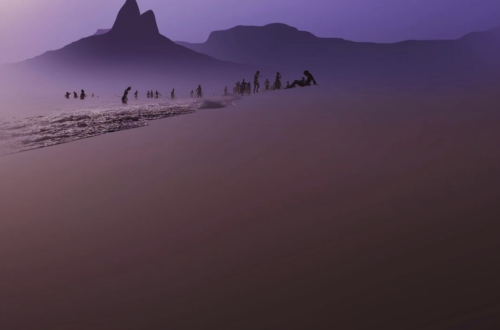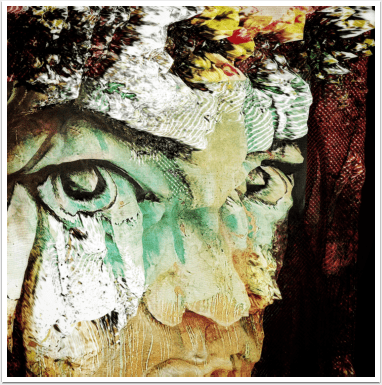Mostly Mobile Photography & Mobile Art – Tickle Your Fancy #51
Welcome back to our fiftieth post in our ‘Tickle Your Fancy’ section. ‘Tickle Your Fancy’ includes a round-up of between three to five links to articles from around the internet that have specifically interested us during the course of the week. Ones that we feel are relevant to your interest in photography and art.
Just to explain the title for this section ‘Tickle Your Fancy’ is an English idiom and essentially means that something appeals to you and perhaps stimulates your imagination in an enthusiastic way, we felt it would make a great title for this new section of the site.
We really hope you enjoy these articles over the weekend…
Stanford Professor Puts Entire Digital Photography Course Online for Free
An introduction to the scientific, artistic, and computing aspects of digital photography. Topics include lenses and optics, light and sensors, optical effects in nature, perspective and depth of field, sampling and noise, the camera as a computing platform, image processing and editing, and computational photography. We will also survey the history of photography, look at the work of famous photographers, and talk about composing strong photographs.
This course is based on CS 178 (Digital Photography), which Marc Levoy (Professor Emeritus of Computer Science at Stanford, and Principal Engineer at Google, taught at Stanford from 2009 through 2014).
He revised and taught the course again at Google in Spring of 2016, and these web pages are from the Google version. The course consists of 18 lectures. The topics, with dates, are given in the course schedule. The lectures were delivered live on Google’s Mountain View campus, broadcast live to Google offices around the world, and recorded for later playback.
The videos linked into these web pages are from those recordings, edited slightly to remove discussion of Google internal projects. Keynote slides from these lectures were converted to PDF files and linked into the schedule after each lecture. Levoy is making these materials freely available, but some of the photographs included in the lectures are individually copyrighted. It should be fine for teachers to re-use this material under fair use, but other uses may be protected.

Zoom comes to Instagram after Five Years
Instagram have announced an update to their iOS app that will let you pinch to zoom on photos or videos. The new feature will be available across the entire app, according to Instagram — pinch-to-zoom will work on the media that shows up in your standard feed as well as on people’s profiles and in the Explore tab. Instagram said the new feature will be rolling out to Android "in the coming weeks."

Raw Editing comes to Snapseed
Following Raw support for Android last October, Google have announced they’re bringing full raw support to Snapseed by rolling out the ability for the professional file format to be edited on iOS.
The new raw tool opens automatically when Snapseed detects a raw file and works seamlessly with other Snapseed tools, such as Healing, Brushes, Frames, Text, HDR or Details. Editing changes can be saved non-destructively, or exported as a plain JPG in high quality. Some of the available adjustments for RAW include Structure, Tint, Shadow control, Exposure (-4.0 to 4.0 f-stops), and Temperature (1.700°K to over 8.000°K). Anyone using Snapseed 2.9 and an Apple USB SD card photo adapter or WiFi SD card can now work with raw images.
In addition to raw support for iOS, on both iOS and Android we’re rolling out the all-new Face tool: a photographic tool that helps you bring focus to faces, smoothen skin, and add clarity to eyes.

Blind Photographer Paints With Light
What do photographs made by blind people look like? They’re more beautiful than you might think. The New York Times has a slideshow of Sonia Soberats photographs. Soberats’s story is a tragic one:
Until 1986, Ms. Soberats was like many single immigrant mothers — living in Queens, working two jobs and watching her two children grow into flourishing adults. Life began to crumble, though, when ovarian cancer was diagnosed for her only daughter. Two years later, the family received more bad news: her only son had Hodgkin’s disease. He died in 1991, and three years later, so did Ms. Soberats’s daughter.
In between those deaths, Ms. Soberats, who had a history of glaucoma, lost her eyesight. First the right eye went dark, then about six months later, the left.

Leipzig flat made Famous in Capa War Photo becomes Poignant Memorial
Robert Capa called them his most definitive images of the second world war. Seconds after the photographer had taken a portrait of a fresh-faced sergeant poised with a heavy machine gun on a Leipzig balcony, the soldier slumped to the floor. On 18 April 1945, in the final days of the conflict, he had been hit and killed by the bullets of a German sniper.
Capa climbed through a balcony window into the flat to photograph the dead man, who lay in the open door, a looted Luftwaffe sheepskin helmet on his head. The subsequent series of photographs show the rapid spread of the soldier’s blood across the parquet floor as other GIs attended to him and his fellow gunner took over his post at the machine gun.
“It was a very clean, somehow very beautiful death and I think that’s what I remember most from the war,” Capa recalled two years later in a radio interview.
American soldiers in the Leipzig apartment building now known as the Capa House. Photograph: Robert Capa © International Center of Photography / Magnum Photos

Donating = Loving = TheAppWhisperer.com
Bringing you (ad-free) TheAppWhisperer.com takes hundreds of hours each month and hundreds of pounds to sustain. If you find any joy and stimulation here, please consider becoming a Supporting Member with a recurring monthly donation of your choosing, or possibly making a one-time donation. This is a not for profit website and one that can only grow with your support.
[seamless-donations]


